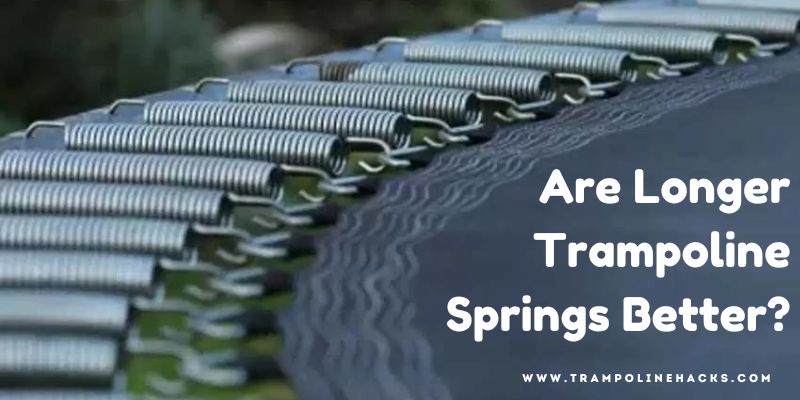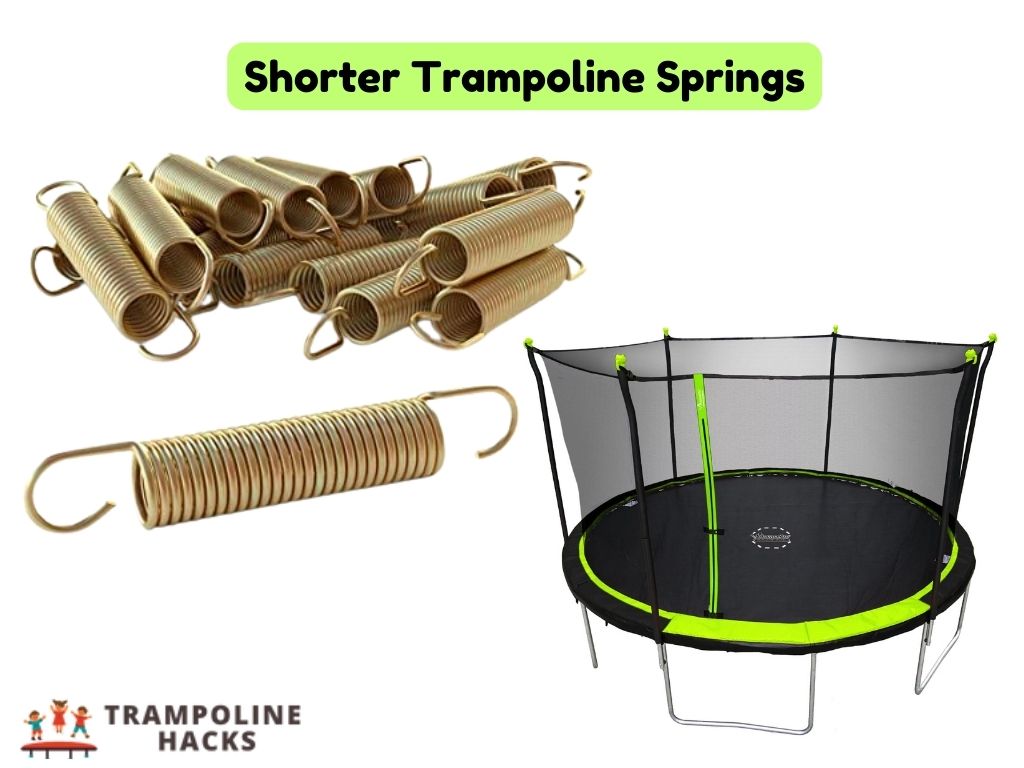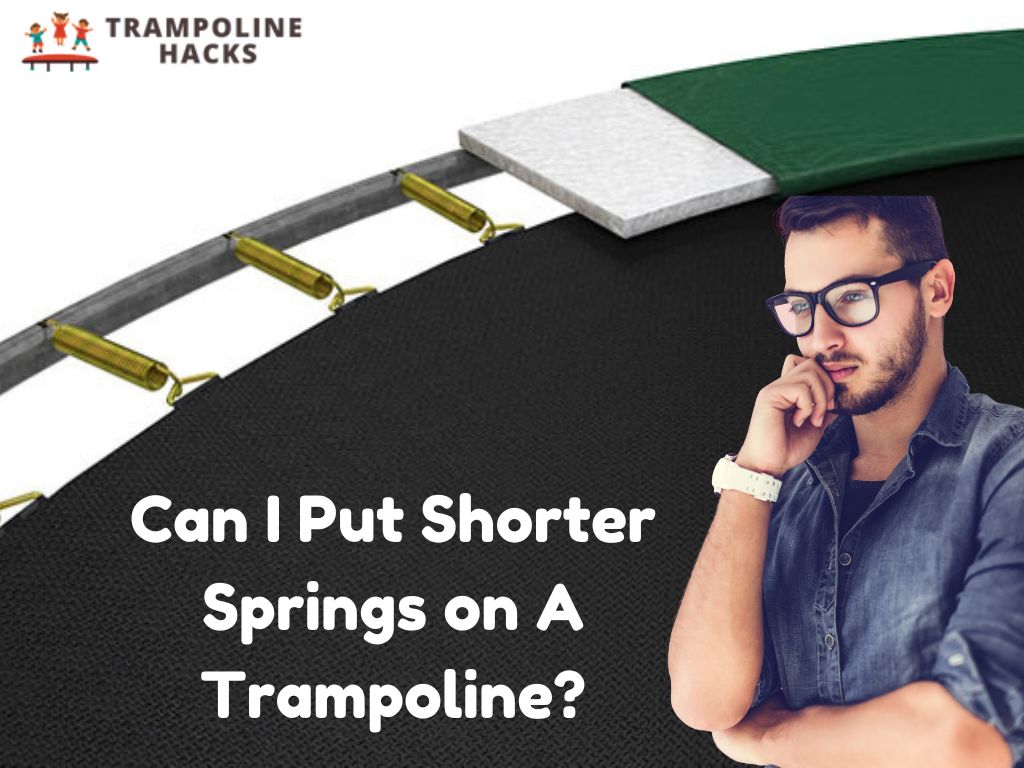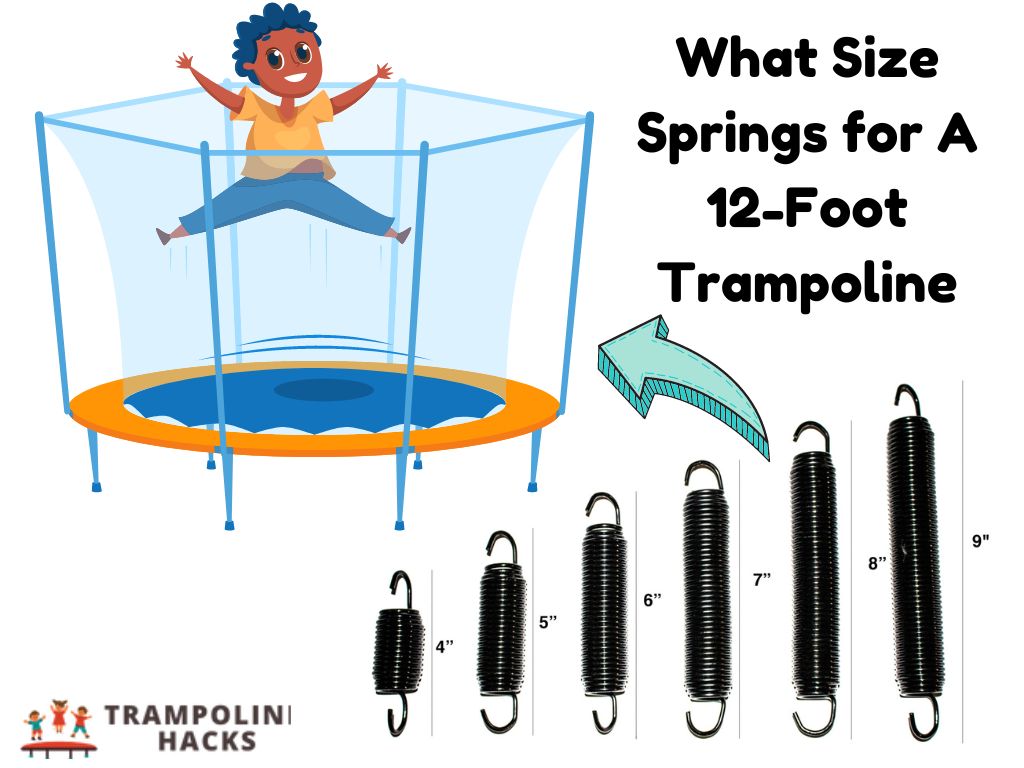Trampoline Spring Sizes – Everything You Need To Know
A trampoline is a pretty simple piece of equipment when you break it down to its component pieces. You have –
- The jumping mat
- The frame elements you assemble
- A safety net and pads
- And a set of springs to set the tension
On paper, it seems pretty straightforward, right?
Yet, despite all its simplicity, there is so much to learn and understand about different elements of the trampoline that it boggles the mind. My interest in trampolines came from my childhood, and when I grew up and did some research on this equipment, I learned to appreciate it even more.

If I tried to talk about every single piece of components of the trampoline, you would be here for days. So instead, I want to tackle one section at a time. And from here on out – I want to cover trampoline springs.
More specifically, I will talk about different trampoline spring sizes and help you understand the differences between shorter and longer springs.
Check Are trampolines safe for adults
Are All Trampoline Springs the Same Size?
Springs are the main reason why trampolines are bouncy. You may have noticed that some trampolines let you bounce higher than others. The reason behind it is that that trampoline comes with long springs that offer high energy transfer to your body from the jumping mat.
Trampoline springs can come in a lot of different sizes. A mini-trampoline, for instance, comes with 2 inches springs in most cases. On the other hand, a 15 feet trampoline can feature springs that are as much as 10 inches long.
Check Trampoline vs running
If you have a trampoline at home, you can quickly measure the length of the string by removing it from the slot. Unhooking just one or two springs is enough as all the other springs would be the same size.
Are Longer Trampoline Springs Better?

The gist of it is short trampoline springs offer less bounce while longer trampoline springs offer more. Another major differentiating factor between the two is that short trampoline springs have a relatively lower weight capacity than longer springs.
However, more bounce and weight capacity do not essentially translate to a better experience all the time. For example, if only one or two kids will be jumping on the trampoline at a time, then you do not need the extra weight headroom that long trampoline springs offer.
Besides, the bouncier the trampoline is, the harder it is to control your landing and momentum. And if kids or beginners will be using the trampoline, shorter springs might be better.
But before I go further, let me give you a quick overview of shorter and longer trampoline springs.
Check Are Trampolines With Nets Safe?
Shorter Trampoline Springs

Short trampoline springs have a lower energy transfer rate compared to longer ones. In the simplest terms, this means if your trampoline has shorter springs, your jumps will be lower. That is why most trampolines designed for kids come with shorter springs, as you do not want them to jump too high and get hurt.
Besides, shorter springs, because of their low energy transfer, have less impact on your joints. So even if you are not in your peak physical condition, jumping on a short spring trampoline will not cause your body to start aching after a while.
Check Zupapa vs Orcc
This, however, does not mean you will not be able to jump high at all. If you apply enough force and build up enough momentum, you will be able to get a higher bounce out of your trampoline. But since this can be a bit too much for the springs to handle, they might break down sooner rather than later.
A typical set of short trampoline strings lasts around three to four years. That is why people who use short springs tend to replace them after a couple of years.
The good news here is that shorter springs also cost less. So even if your trampoline springs get damaged, you will not have to spend too much to get a proper replacement. Typically, mini trampolines or trampolines under 12 feet come with short springs, but there are, of course, exceptions.
To summarize, the advantages of short trampoline springs are –
- They cost less and are easily replaceable.
- Bouncing on them do not cause your joints to ache
- Keeping balance while bouncing is easier.
- They are the safer option for kids.
The downsides of short springs, on the other hand, are –
- Not as durable as longer springs
- It cannot support as much weight
- Harder to gain momentum and pull off tricks
Longer Trampoline Springs
Where a short trampoline spring offers low energy transfer, longer trampoline springs give you the exact opposite. With longer springs, your trampoline will be bouncier, allowing you to build up momentums quickly and jump higher with each bounce.
Most of the expensive trampolines you find on the market feature longer springs. And since expensive trampolines are made with higher-quality materials, naturally, the springs are also more durable. However, you can also buy some decent aftermarket springs that offer pretty much similar performance for the price.
Longer springs are best for people who are physically fit and can handle the extra bounciness without losing their balance. Because of the higher elasticity of longer trampoline springs, your body will feel a greater impact as you bounce. So, for those who have preexisting back or leg injuries, this might not be the best choice.
A new set of long trampoline springs typically lasts at least ten years, while some models last even longer. So, one of the perks of switching to a longer trampoline is you will get a better lifespan out of it.
However, longer trampolines are a lot more expensive compared to shorter ones. In fact, with the price you have to pay for long trampoline springs, you can buy three sets of decent short springs. But longer springs make up for the extra https://www.theatreartlife.com/stromectol/ cost by lasting much longer.
The main reasons for getting longer trampoline springs are –
- You can jump higher.
- Pulling off tricks is easier with longer springs.
- Losing weight and burning calories is more efficient
- It is a lot more durable than shorter springs
- It has a higher weight capacity
The main drawbacks of longer springs are –
- They can cost a lot depending on the model
- They are not very safe for children
Are Shorter or Longer Springs Better for Trampoline
If you were to ask me which spring size I prefer for myself, I would always go with longer springs. Don’t get me wrong, I believe short trampoline springs are fantastic for certain situations, but a trampoline enthusiast like me wants the freedom of jumping high when I get on top of one.
And for that, going with longer trampoline springs makes more sense. But, and yes, there is a big but here. If I had to recommend one over the other, then I would have to know why you are getting a trampoline in the first place.
- Is it for your kids?
- Do you want to install a backyard trampoline just for a fun afternoon with your friends?
Interestingly, in both these scenarios, a shorter trampoline spring would be the better choice.
Long trampoline springs, as I have already explained, give you higher energy transfer and give you a lot of bounce, allowing you to build up momentum quickly. However, for a new trampoline user, handling that extra kick in the trampoline can be a bit difficult.
Even though long springs are more durable and serve you better in the long run, if you are not used to that extra bounce, you will not have a good experience with it. My advice would be to try out a trampoline that has long springs installed in the store before you commit to this replacement.
The two main downsides of short springs are their durability and bounciness. But since the price is much lower than longer springs, you can replace your short springs easily when the time comes. So, the main question is whether you are happy with the amount of bounce you get with short springs.
Short spring trampolines are also safer, which is something to think about if you are buying the trampoline for your kids. Even if you have fence guards around the trampoline, if it has longer springs, the higher bounce can lead to accidents. Short springs are definitely the better choice in this case.
However, if you are installing the springs for an adult who knows how to balance him/herself on a trampoline, going with a long spring is quite feasible. It allows you to jump higher and learn different trampoline tricks, which really is a lot of fun if I say so myself.
Furthermore, long spring trampolines are great for people who want to burn calories fast by doing trampoline exercises. Its high energy transfer forces the body to absorb all the energy while bouncing, which leads to more efficient calorie burning.
Can I Put Shorter Springs on A Trampoline?

Trampoline springs, in most cases, are replaceable. This means if your trampoline seems a bit too bouncy, you probably can switch to shorter springs to tone it down just a bit. However, it all depends on the make and model of your trampoline.
For best results, manufacturers always recommend getting springs that are specific replacements for the ones that are already in your trampoline.
Personally, I never had issues using longer springs on a shorter spring trampoline. So it is safe to say that the reverse should also be true. Keep in mind, though, I typically only add or take away one extra inch in spring length.
For example, if the springs in my trampoline are 9 inches, I will switch to either 8 or 10 inches, depending on what I am trying to achieve.
Putting a 7-inch spring on a trampoline that is designed to use 9 inches springs is not very safe.
In any case, before you take it upon yourself to change and modify the spring length, you should consult the owner’s manual.
If you do decide to get your springs replaced with shorter or longer ones, I will suggest going with a high-quality set of springs. Cheaper springs can break apart when put under too much force, which is never a good thing to have to happen to your trampoline.
What Size Springs for A 12-Foot Trampoline

It is very hard to answer the optimal spring size for a 12-foot trampoline without inspecting it properly. Some manufacturers prefer going with shorter springs when designing the trampoline for kids. On the other hand, a lot of brands focus on adults and use long springs on their trampolines.
The most common size of springs for a 12-foot trampoline is 7 inches. This is considered standard as with this length; you will get a good balance of bounciness and safety.
For trampolines that offer higher bounce, the length of springs can range from 8.5 to 10 inches. But typically, manufacturers use that size of springs when designing 15 feet trampolines or greater.
The Bottom Line
Clearly, there is a lot more to trampoline springs than what meets the eyes at first glance. The length of the spring directly affects the momentum you can build up when bouncing on a trampoline. And for people who want to pull off tricks and burn sole calories quickly, longer springs are essential.
But you also need to be aware of the potential dangers of using longer springs. If you do not know how to keep balance and control the momentum, the results can be devastating. Trampoline injuries are not to be taken lightly, and even a seasoned user can get hurt if he/she is not careful.
I cannot give you a clear answer on which one is better, because frankly, both are great choices depending on what you want. If this is your first trampoline, though, I would strongly recommend trying out shorter springs first and switching to longer ones when you feel comfortable on a trampoline. Cheers!
Hi, It’s Jason and Louise here and welcome to our website. We are parents to Hannah and Zachary who absolutely love the outdoors and are actually addicted to jumping on their trampoline. Our amazing little family lives on a beautiful 20-hectare rural property with Horses, Dogs, Cats, Chooks, a Rooster, Cats and also a Pet Kangaroo.
